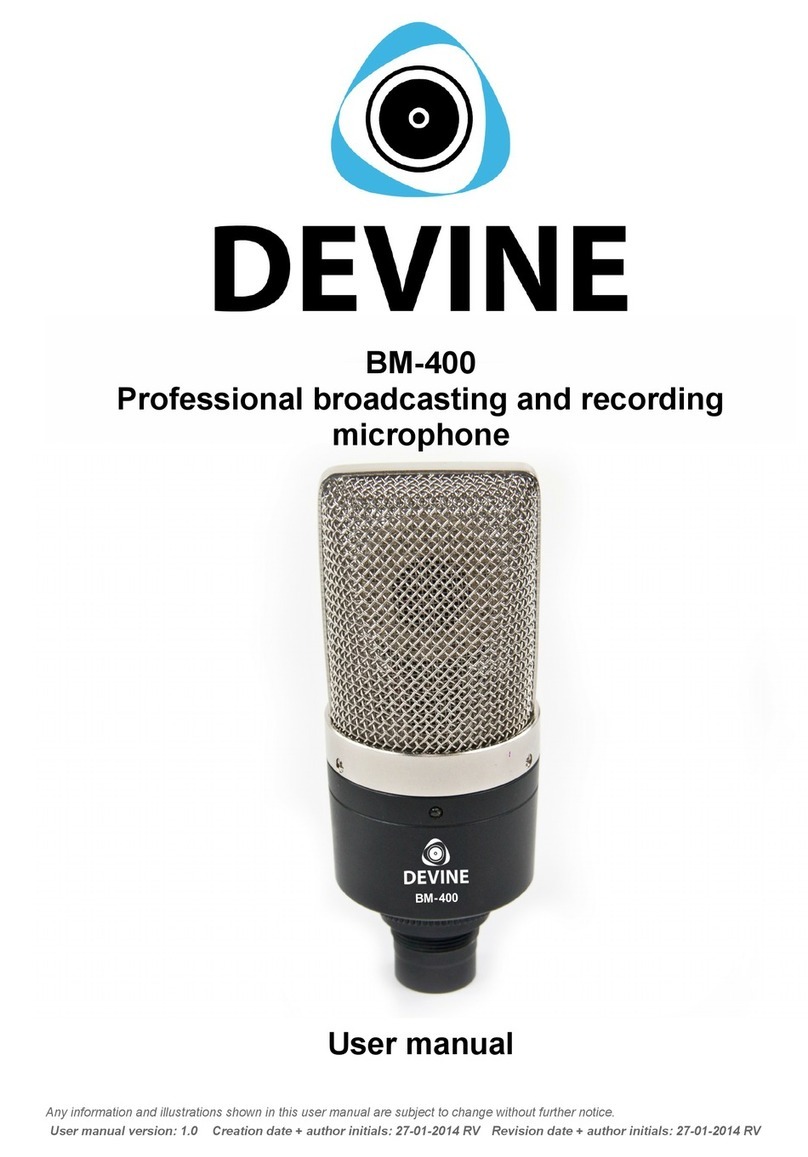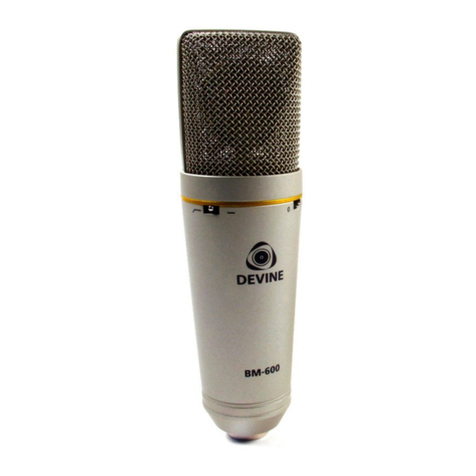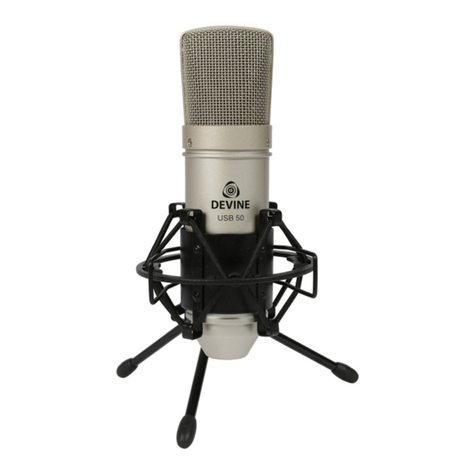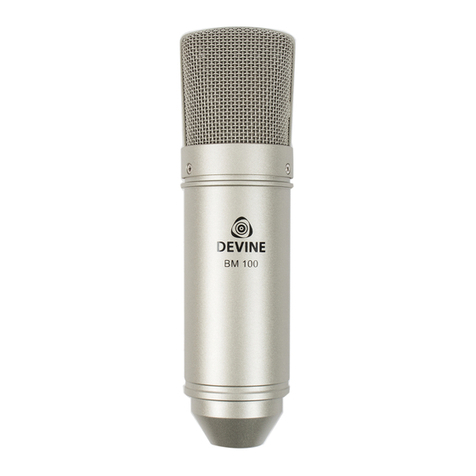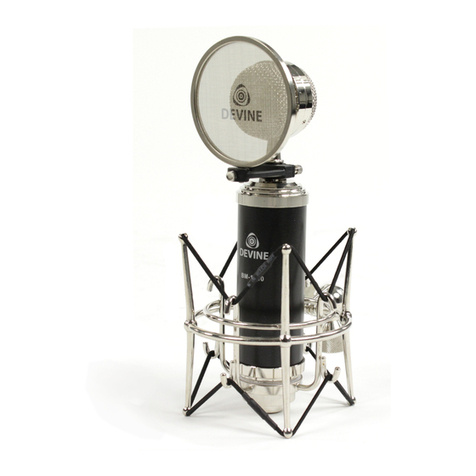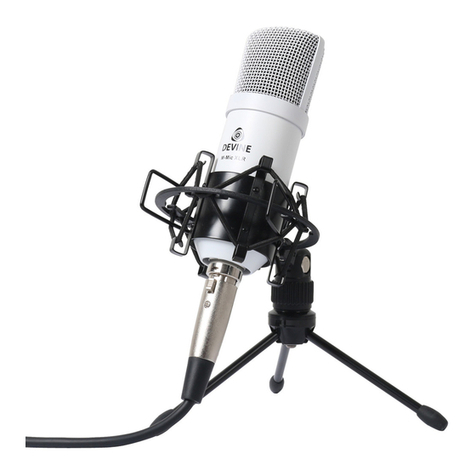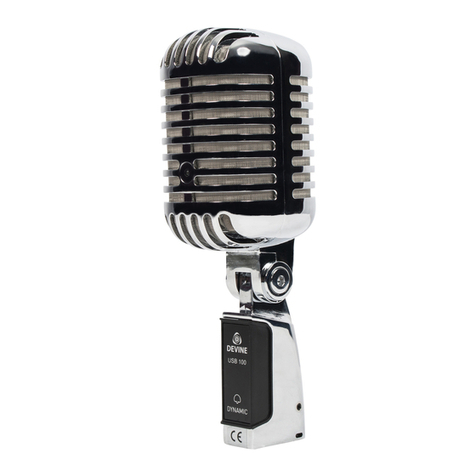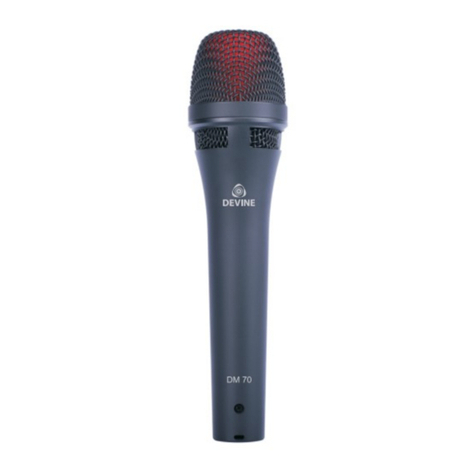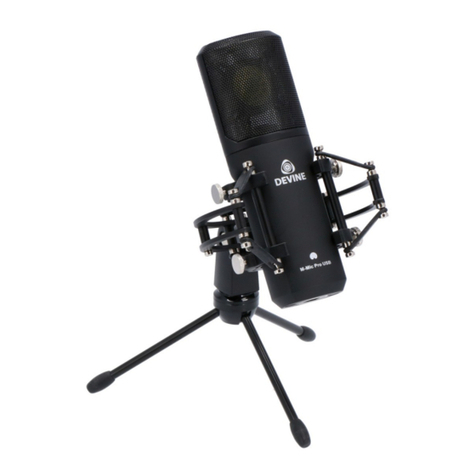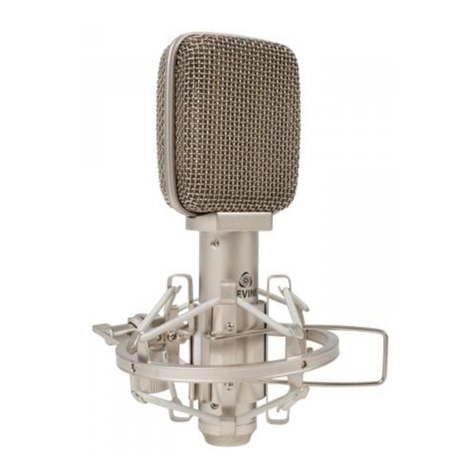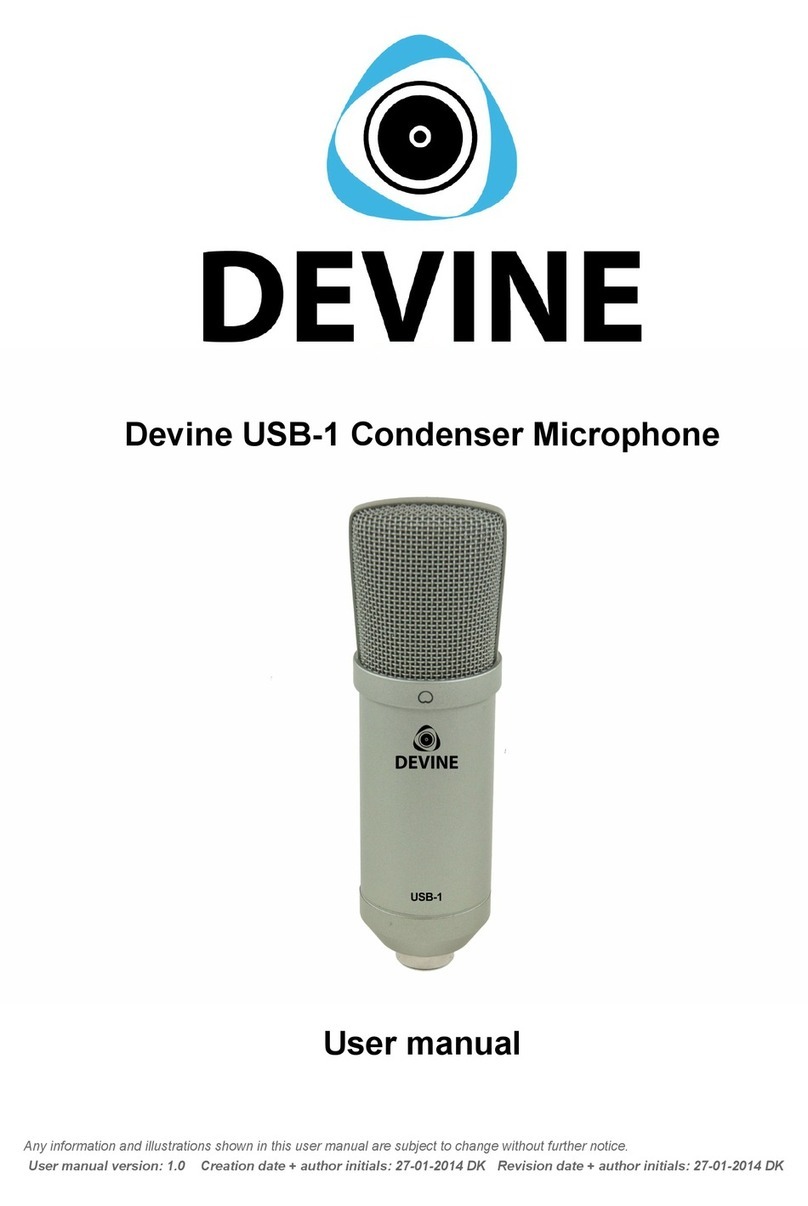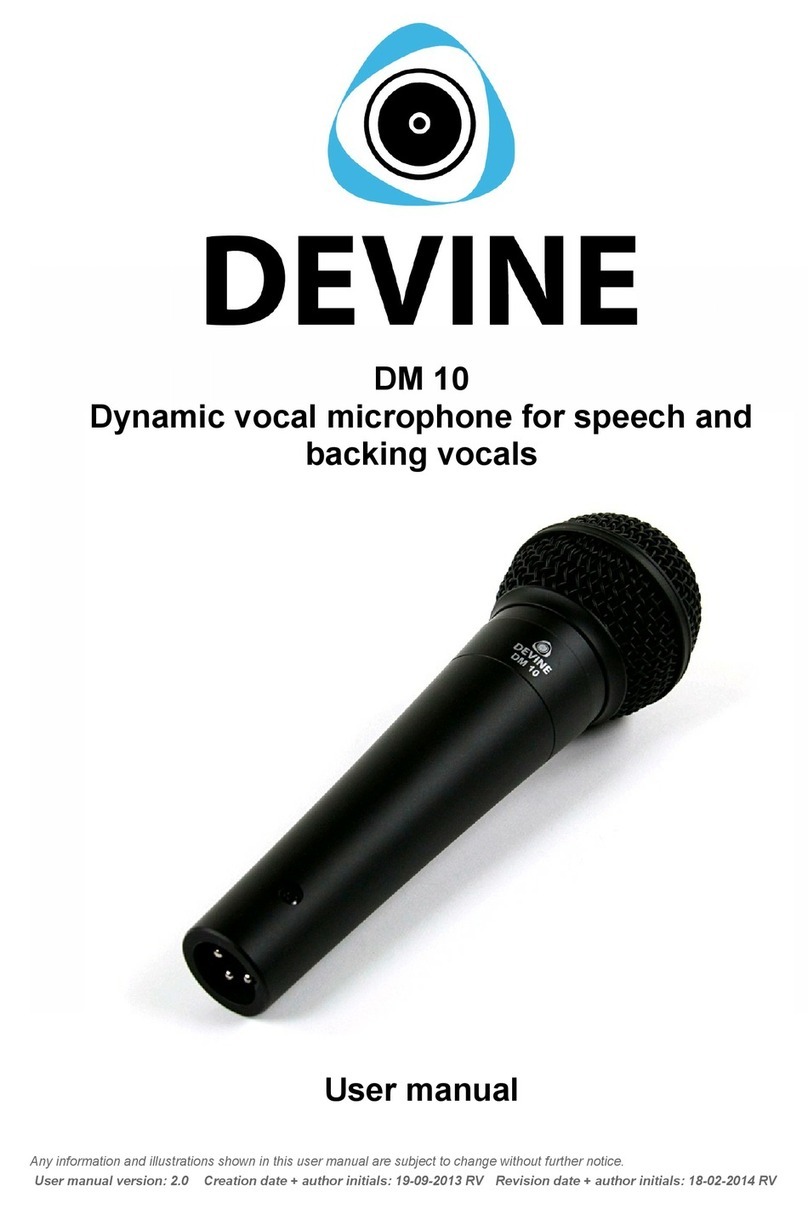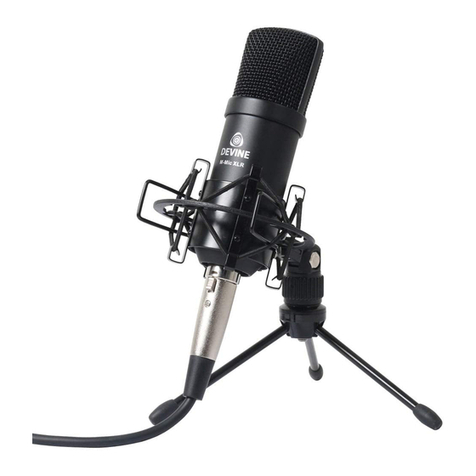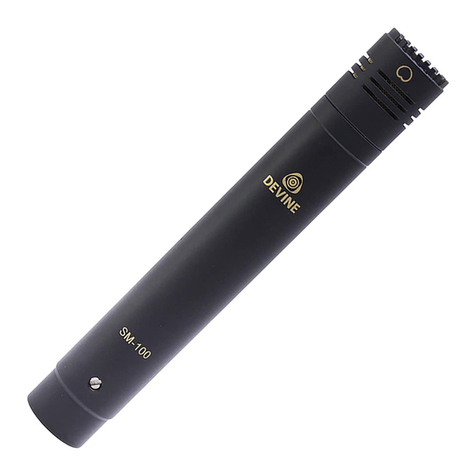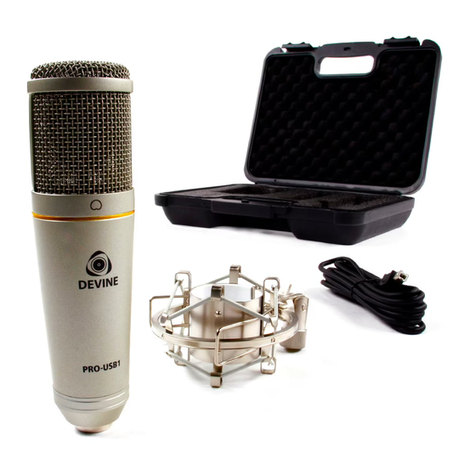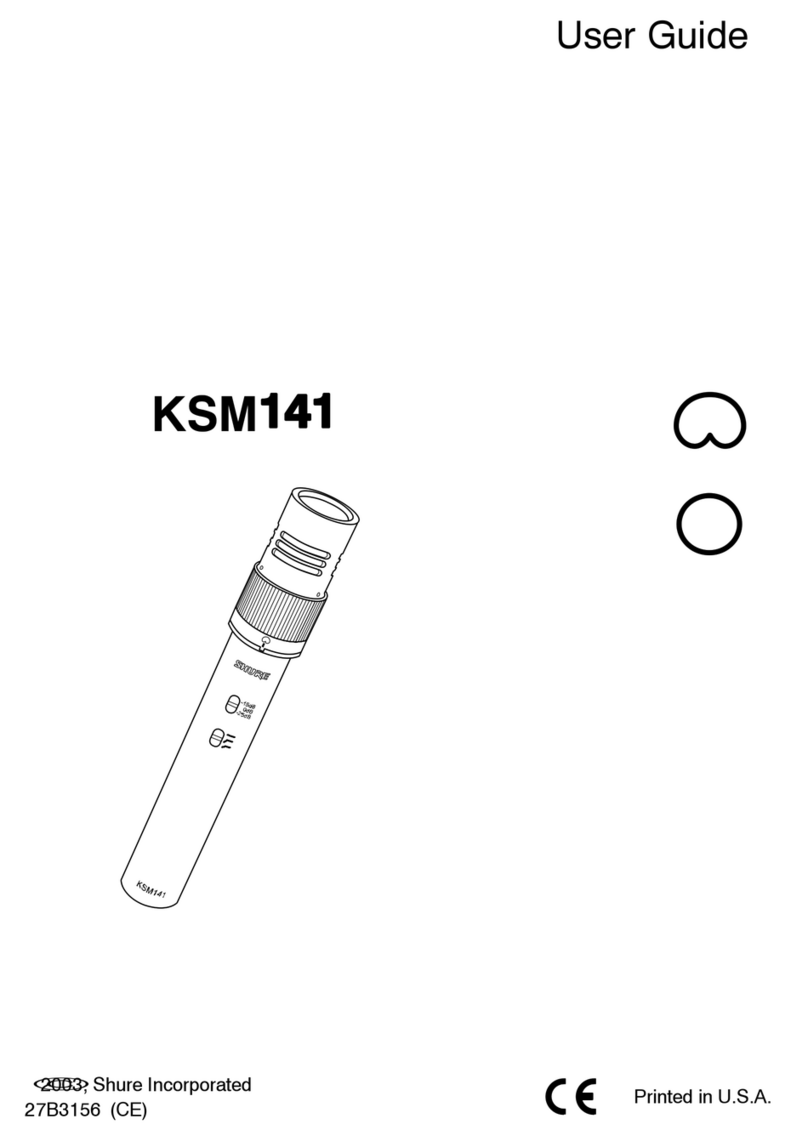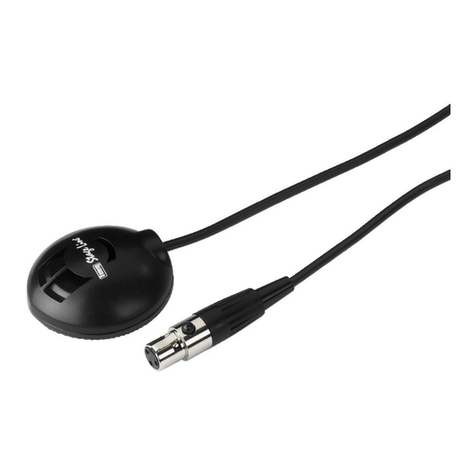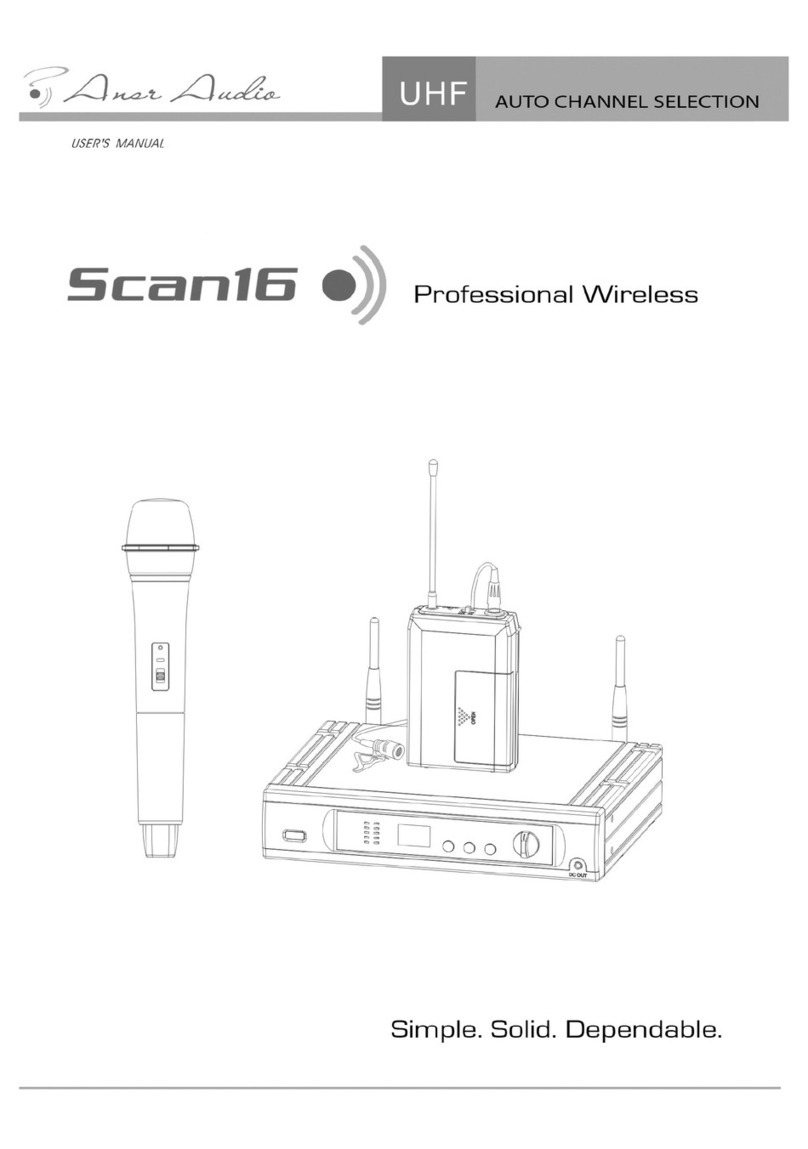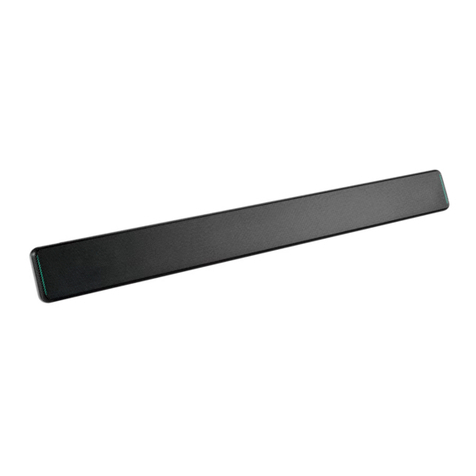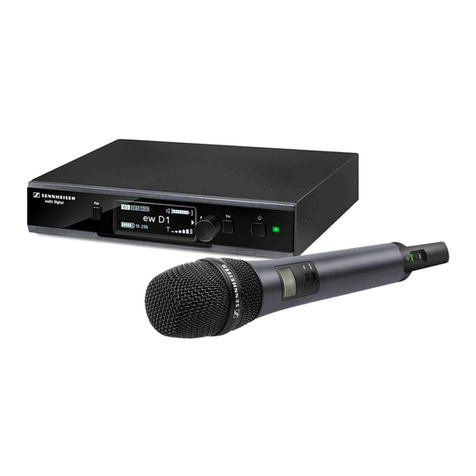Using the microphone
The Devine DM 20 dynamic microphone is suitable for live vocal applications. Thanks to the uni-directional
polar pattern, most of the sound is captured from directly in front of the microphone and not from the rear or
sides, which keeps feedback loops to a minimum.
IMPORTANT: Phantom power
This dynamic microphone can be connected to a mixing console or similar device which is capable of
delivering +48V phantom power. Even though the DM 20 is a dynamic microphone, it does not re uire +48V
phantom power to operate, but exposure to phantom power will not harm it in any way.
Connecting the cable
The Devine DM 20 comes with a microphone cable of approximately 3
metres long. It features a male and a female 3-pin XLR connection. One
end of the cable fits into the DM 20 microphone connector and the other
can be connected to a mixing console, for example.
The DM 20 microphone and included cable are e uipped with a locking
mechanism. When the cable is connected to the microphone, an audible
'click' can be heard. That means the cable has locked to the microphone
connector and can not fall off. When you want to remove the cable from
the microphone, press the locking tab on the connector and gently pull it
loose.
The other end of the cable is compatible with most mixing boards that have 3-pin XLR connectors for
microphone inputs. If this is not the case with your mixer, and your microphone input is a jack connector, for
instance, you can use an XLR-to-jack adapter. You can also extend the cable with a separately available
XLR male – XLR female cable.
Positioning the microphone
Please note that the Devine DM 20 is a dynamic microphone with a uni-directional polar pattern (super-
cardioid) and is less sensitive than a condenser studio microphone. This can be beneficial during live
performances when there is a variety of different sounds and volumes on stage. The lower sensitivity and the
specific polar pattern of this microphone keep feedback loops to a minimum. Feedback loops are usually the
result of microphones being placed too close to speakers. The sound the microphone picks up from the
speakers is amplified and played back through these speakers, which is then captured by the microphone,
and so forth. This infinite loop can only be eliminated by feedback destroyers or by simply positioning the
microphone further away from the speakers.
During live applications, feedback loops often occur when wedge floor monitors are positioned without
paying attention to the characteristics of the microphone being used. When using a cardioid microphone, for
example, most of the sound is captured from directly in front of the microphone and some from the sides. It is
therefore ideal to place a wedge monitor in front of the vocalist (on the floor), in a direct line from the
microphone.
Because the DM 20 is a dynamic super-cardioid microphone, some sound is also captured from the rear of
the microphone. Therefore, placing a wedge monitor directly in front of the microphone, facing the vocalist, is
not recommended. Because the DM 20 doesn't pick up much audio from the sides, it would be better to
place one or two wedge monitors slightly to the left and/or right, facing the vocalist.
Using the microphone clip
The DM 20 also comes with a practical microphone stand clip for placing the microphone on a stand. This
clip is flexible and will hold the microphone firmly in place. Gently slide the microphone into the clip until the
ON/OFF switch is level with the opening on the clip. Do not attempt to force the microphone any further into
the clip, as this will not improve functionality and could cause the clip to break.
The microphone clip is e uipped with 5/8” thread, which is compatible with most microphone stands. If your
All information and illustrations shown in this user manual are subject to change without further notice.
User manual version: 1.0 Creation date + author initials: 10-12-2015 RV Revision date + author initials: -
